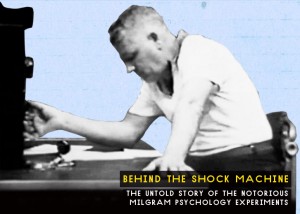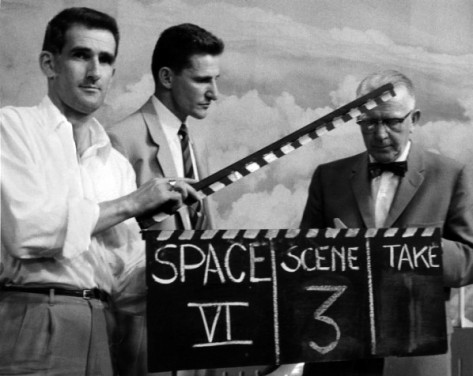You might think watching Milgram’s film Obedience, that you are watching rare ‘through the keyhole’ footage of a live experiment. In fact the film is tightly scripted and the starring in it were selected according to how well they demonstrated the drama of both the experiment and its results.
Milgram filmed around fifteen men in the final days of his research. Then he watched the raw footage and made a selection of who to include and who to leave out of the final version.
His handwritten notes on the unedited footage read like notes for an audition. One man, he noted “reeks of obedience” and “is not bad at all.” A second was “animated and alive” but couldn’t be used because he told the experimenter that he didn’t believe the experiment was real, and that the moans and groan sounded phony. Another was “fair”; the next, Milgram discarded as “not very convincing.”
But the star was a man Milgram would eventually call Fred Prozi. Milgram’s wrote “brilliant” three times on his notes about this potential cast member. “He should be used in the final film as a demonstration of our obedient subjects.”
 Aspiring filmmaker Chris Johnson edited the film to depict one run-through of the experiment in its entirety, splicing together clips of different male subjects. We see one man listening to the instructions and then watching as the learner is strapped in. Another receives a sample shock. Another refuses to go on at 150 volts. Another laughs. Another tells the experimenter to take the money back. Another reaches 345 volts before refusing to continue.
Aspiring filmmaker Chris Johnson edited the film to depict one run-through of the experiment in its entirety, splicing together clips of different male subjects. We see one man listening to the instructions and then watching as the learner is strapped in. Another receives a sample shock. Another refuses to go on at 150 volts. Another laughs. Another tells the experimenter to take the money back. Another reaches 345 volts before refusing to continue.
Then we get to Fred Prozi. The only person in the film who goes to the maximum voltage, Prozi dominates the narrative: he is allocated more time than the other subjects combined. And it’s a riveting performance.
Prozi’s segment begins when he’s about to give the ninth shock. For thirteen minutes, or almost a third of the film, we watch Prozi’s excruciating attempts to convince the experimenter to stop. His tension is both physical and verbal: he gets up, walks around, pleads with the experimenter, and calls out to the learner in the room next door.
Prescreening and audience reactions
It’s hard not to become engaged with Fred, with his concern and conflict, his deference and confusion. Our sympathies, and a kind of horrible fascination with how far he’ll go, make it compulsive viewing. Johnson noted this in his first test run of the edited version. In July 1965, he reported to Milgram:
“I ran it in Holt, Rinehart and Winston’s small screening room. A number of other employees from the Foreign Language Dept. were also present . . . no one was fooled by the “punishment-learning” front, and all found it incredible that subjects could have been deceived. They thought the subjects protests phoney. . . . They also felt their lunch hour had been ruined and their faith in mankind shaken. Yet for a week now several of the women have been pestering me to rerun the film on a Saturday for them and their husbands.”
Fiction not documentary
The trouble with Prozi’s riveting performance is that it encourages viewers to see obedience as the norm in Milgram’s experiments.
In fact, in over two thirds of the variations of the experiment, over 60% of people disobeyed the experimenter’s instructions. And of those who did go to maximum voltage, many did so because they suspected the experiment was a set up and the learner’s pain was faked.
The documentary misrepresents Milgram’s findings. But there’s no arguing with the fact that it makes compelling viewing. Milgram was right on that score. Seeing is believing.
Clapperboard by KUHT CC via Wikimedia Commons.


Comments are closed.